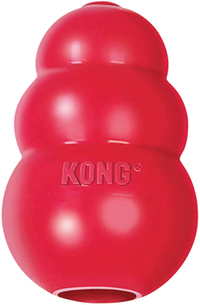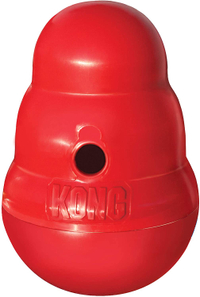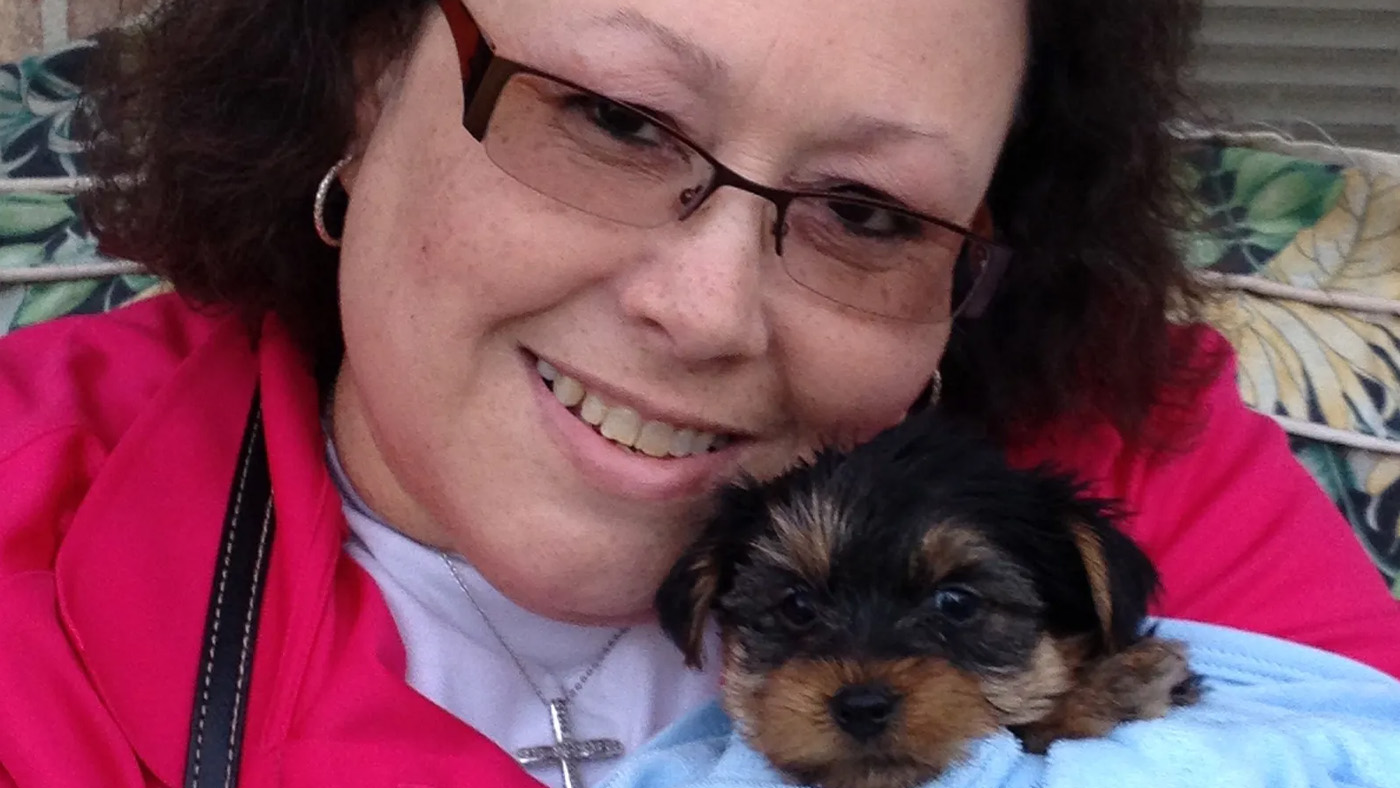How to teach your dog not to destroy toys
Find out how to teach your dog not to destroy toys plus safety tips from an experienced veterinarian
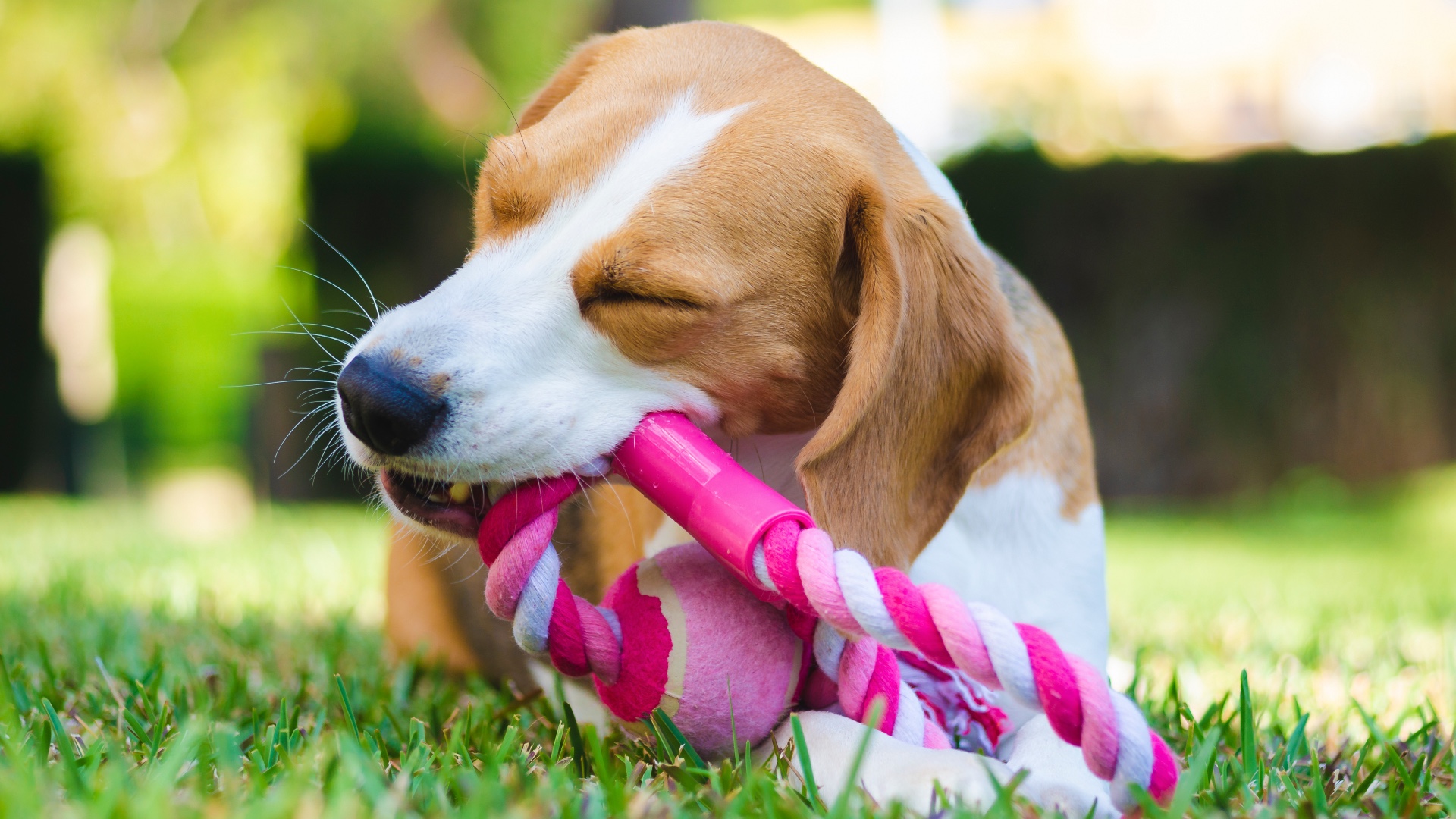
If your pup’s playtime is starting to resemble a crime scene then you’ll be keen to find out how to teach your dog not to destroy toys.
Dogs are well-known for shaking their toys, as they can consider it as a substitute for hunting. In particular, you may see certain breeds such as those in the terrier group being particularly aggressive with their playthings which can cause significant damage to it and create a risk to your pet's health.
When even the best dog toys can create a choking hazard in the jaws of an overzealous canine, this article will cover why dogs destroy toys, as well providing top tips for reducing destruction and helping to keep your pup safe when playing.
Why do dogs destroy toys?
There are many different reasons why dogs destroy their toys, the first of which is boredom. Making sure your pup gets plenty of exercise and mental stimulation can help to reduce the desire to tear their toys to pieces in the first place. Regular walks, doggy play dates, training sessions, and the use of puzzle toys are just some of the ways you can help provide mental enrichment and stimulation.
Dogs that are left home alone may also turn to destructive behavior as a sign of frustration or even separation anxiety. Other signs of separation anxiety to look out for include toileting indoors, howling or barking, pacing, and drooling excessively. Separation anxiety is a serious behavioral problem and it’s always best to seek veterinary advice if you are concerned your pup may be showing signs.
It’s also important to remember that chewing, shaking, and tearing up toys is a natural behavior for dogs whose ancestors had to hunt for their dinner. Squeaky toys in particular mimic the sounds of small prey, such as rats, which can bring out your dog’s natural instinct to rip them to shreds.
Chewing is also an important and enjoyable behavior for dogs that helps keep teeth clean and is even believed to relieve stress. Selecting the best dog chew toys for your pup to bite down on safely along with dental health products accepted by Veterinary Oral Health Council (VOHC) will help meet these needs.
Is it normal for my dog to destroy toys?
Destroying toys can be a completely natural behavior for dogs but can also be a sign of boredom, frustration, and even separation anxiety. Once the toy has been destroyed, small pieces or stuffing can also be a choking hazard or may cause an intestinal blockage if swallowed. If your dog has always destroyed his toys, it’s probably nothing to worry about – though you should try to find him some more durable toys. However, if this is a new behavior, it’s worth considering whether your dog could be stressed, bored, or frustrated. Talking to a doggy behaviorist may help.
Choosing the right toys
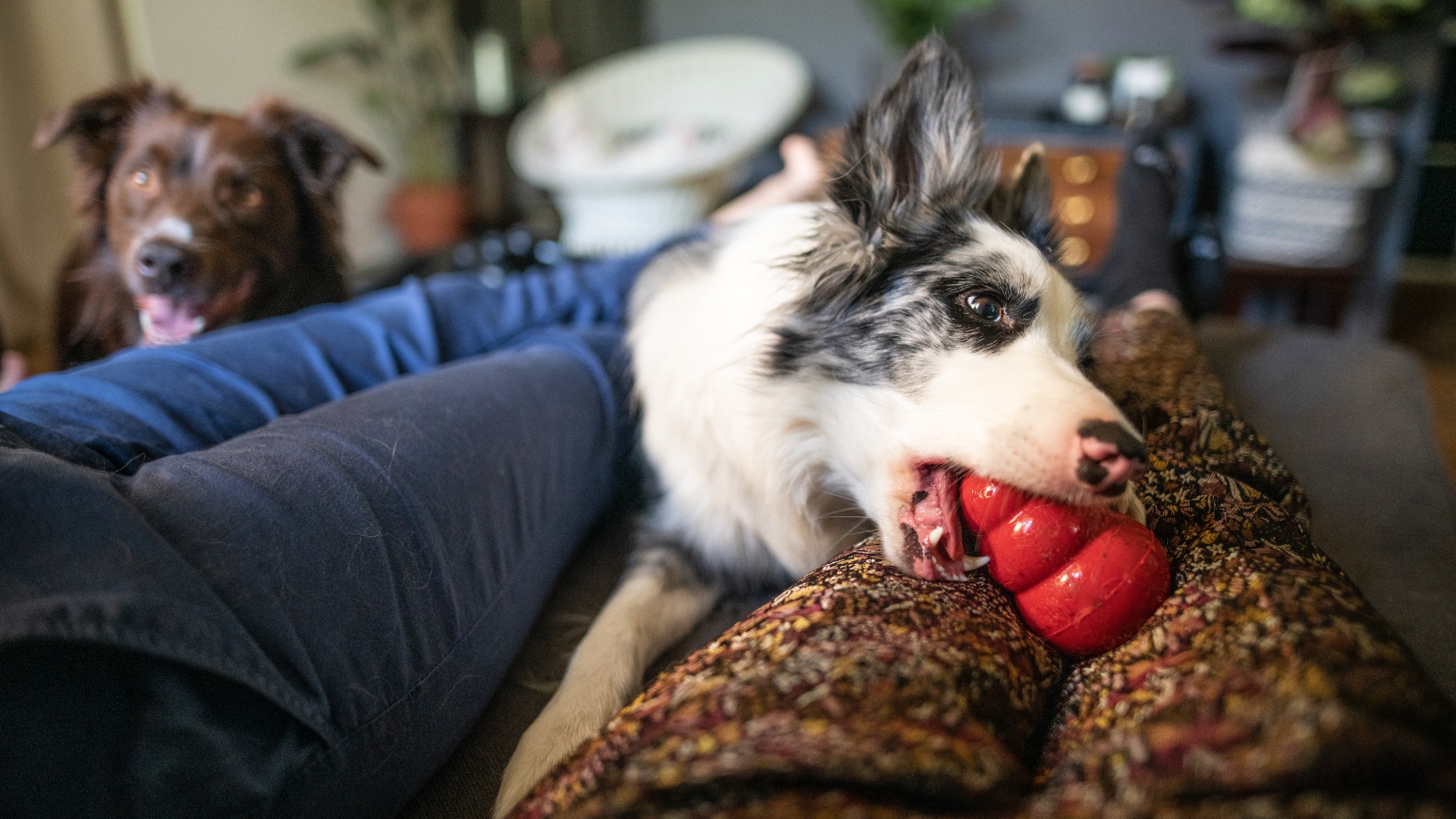
Toy selection is important, not just for safety, but also for function. When leaving your dog at home with a toy to keep them occupied, an interactive feeding toy or dog puzzle toy provides mental stimulation as well as a food reward. These toys help keep your pup’s brain busy. Larger interactive feeder toys made from thick plastic or durable rubber are also a lot safer than a plush or stuffed toy that is easily chewed and shredded. I personally use and recommend the Kong Wobbler and Kong Classic.
Toys should also be chosen based on your dog’s breed and size. Large breed dogs with powerful jaws can destroy toys easily, so look out for the best durable dog toys made of extra tough materials, such as rubber. You will notice that well-established brands have specific products designed for additional durability or strong chewers.
Kong® Classic
The classic tough rubber toy that can be stuffed with kibble or treats to keep your pup entertained. Also available in extra tough ‘Extreme’ rubber for strong chewers.
Kong Wobbler | Amazon
This is a robust interactive food-dispensing toy that your pup has to paw or nudge to release kibble or treats. It’s also dishwasher-safe and easy to clean, with no small parts.
Toys and safety
Destroying toys isn’t just an expensive habit, it’s also a serious safety risk for your pup. If swallowed, pieces of toy such as stuffing, fabric, squeakers, rope, and plastic can become stuck in the gut causing a life-threatening blockage (obstruction). Toys with small pieces that can easily be chewed off or swallowed should be avoided, and those that have developed holes or have been ripped open should be thrown away.
Toys are also a potential choking hazard, so it’s important to choose the right size toy for your dog and supervise them closely when playing. Small balls, for example, risk getting stuck in the back of the throat or the windpipe (trachea).
If you know or suspect your dog has swallowed one or part of their toys, it’s important to seek veterinary advice as soon as possible. Your veterinarian will often recommend blood tests, x-rays, or abdominal ultrasound to try and determine if the object swallowed is likely to pass through the gut, or risks becoming stuck and causing an obstruction. Signs of an obstruction include vomiting, loss of appetite, lethargy, abdominal pain, and straining to pass feces.
How to teach a dog not to destroy toys
The following simple tips will help to keep your dog safe when playing with toys and teach them not to destroy toys:
- Actively play fetch or tug with your dog rather than leaving them unsupervised with toys, especially soft toys or those with a squeaker. Remove these toys from the backyard once the game is over.
- Teach your dog to ‘drop’ their toy on command so you can stop play if it’s becoming too rough. Then offer a treat and redirect them onto another activity.
- Always supervise your dog closely where possible when playing with toys.
- Choose the correct size for your dog. If you are unsure, it’s safer to size up.
- Replace toys when they start to rip, have been torn open, or damaged.
- Use the right toy for the job. Extra-durable larger rubber toys are perfect for large breed dogs and extreme chewers. Interactive feeding toys made of robust materials are a good choice when leaving your pup at home.
Conclusion
Understanding why your dog is destroying their toys and making sure their needs are being met is crucial to reducing destructive chewing behavior. You can also help by choosing the right toys to meet your dog’s needs and by teaching them to play safely.
PetsRadar Newsletter
Get the best advice, tips and top tech for your beloved Pets
Ellen is an experienced small animal vet and copywriter who graduated from the University of Melbourne in 2012. She has worked in clinics across Australia, the UK and New Zealand, including the Massey University Veterinary Teaching Hospital where she discovered her passion for writing and education. Ellen’s veterinary interests include small animal medicine, surgery, nutrition, and rabbit medicine. She currently lives in Somerset with her fiancé and bouncy borzoi puppy named Yeti.
